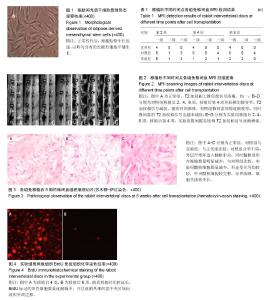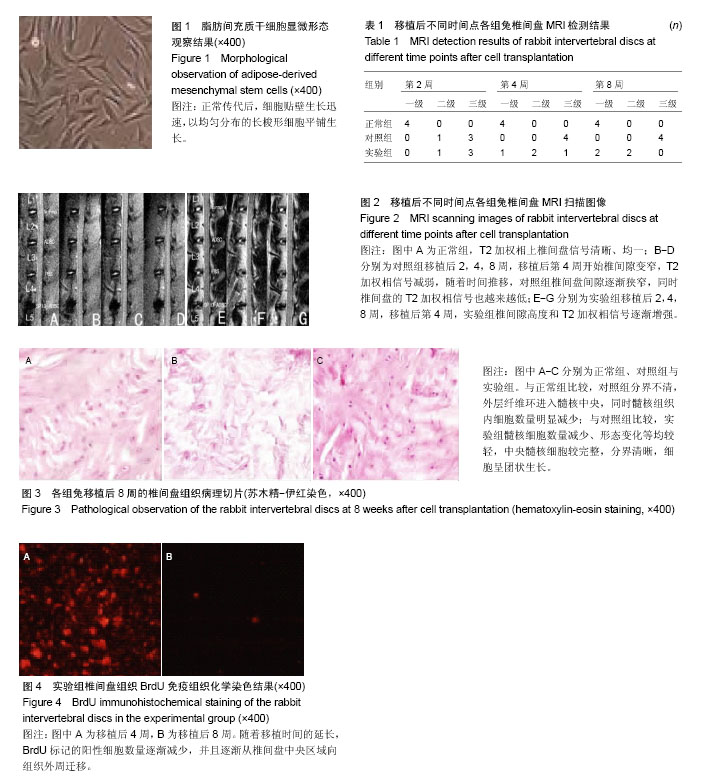| [1] Urban JP,Roberts S.Degeneration of the intervertebral disc. Arthritis Resther.2003;5:120-130.[2] Waddell G.Low back disability.A syndrome of Western civilization.Neurosurg Clin N Am.1991;2(4):719-738.[3] 冯传汉,张铁良.临床骨科学[M].2版.北京:人民卫生出版社, 2004:1925-1934.[4] Gruber HE,Hanley EN Jr.Ultrastructure of the human intervertebral disc during agingand degeneration: comparison of surgical and controlspecimens. Spine. 2002; 27:798-805.[5] Loma K,Riihimaki H,Luukkonen R,et al.Lowback pain in relation to lumbar discdegene-ration.Spine.2000;25:487-492.[6] Luoma K,Vehmas T,Raininko R,et al.Lumbosacral transitional ver tebra: relation to disc degeneration and low back pain. Spine.2004;29:200-205.[7] 吴在德,吴肇汉.外科学[M].6版.北京:人民卫生出版社,2003: 872-875.[8] Mochida J,Nishimura K,Nomura T,et al.The im portance of preserving disc structure in surgical approaches to lumbar disc herniation.Spine.1996;21:1556-1564.[9] Gregory CA,Gunn WG,Peister A,et al.An Alizarin red-based assay of mineralization byadherent cells in culture: comparison with cetylpyridiniurn chloride extraction.Anal Biochem.2004;329(1):77-84.[10] Hayashi O,Katsube Y,HiroseM,et al.Comparison of osteogenic ability of rat mesenchyal stem cells from bone marrow,periosteum,and adipose tissue.Caleif Tissue Int. 2008;82(3):238-247.[11] Planat-Benard V,Silvestre JS,Cousin B,et al.Plasticity of human adipose lineage cells toward endothelial cells: Physiological and therapeutic perspectives.Cireulation. 2004;109(5):656-663.[12] Zuk PA,Zhu M,Mizuno H,et al.Multilineage cells from human adipose tissue: implications for cell-based therapies.Tissue Eng.2001;7(2):211-228.[13] Kern S,Eichler H,Stoeve J,Kluter H,et al.Comparative analysis of mesenchymal stem cells from bone marrow, umbilical cord blood ,or aipose tissue.Stem Cells.2006;24: 1294-1301.[14] Izadpanah R,Trygg C,Patel B,et al.Biologic properties of mesenchymal stem cells derived from bone marrow and adipose tissue.Cell Biochem.2006;99:1285-1297.[15] Rodriguez AM,Elabd C, Deltel F, et al. Adipocyte differentiation of multipotent cells established from human adipose tissue.Biochem Biophys Res Commun. 2004;315: 255-263.[16] Casteilla L,Planat-Benard V,Cousin B,et al.Plasticity of adipose tissue:a promising therapeutic avenue in the treatment of cardiovascular and blood diseases?Aich Mal Coeur Vaiss.2005;98(9):922-926.[17] Oedayrajsingh-Vanna MJ,Van HS,KniPPenberg M,et al.Adipose tissue-derived mesenchymal stem cell yield and growth charaeteristics are affected by the tissue-harvesting procedure.Cytotherapy.2006;8(2):166-177.[18] Hombach-Klonisch S,Panigrahi S,Rashedi I,et al.Adult stem cells and their trans differentiation potential-perspeetives and therapeutic applications.J Mol Med (Berl).2008;86(12): 1301-1314.[19] 中华人民共和国科学技术部.关于善待实验动物的指导性意见. 2006-09-30.[20] 陆东风,吴昊,黄璟,等.新生SD大鼠心脏干细胞的体外分离培养与鉴定[J].南方医科大学学报,2006,26(11):97-100.[21] Strauer BE,Brehm M,Zeus T,et al.Repair of infarcted myocardium by autologous intracoronary mononuclear bone marrow cell transplantation in humans.Circulation. 2002; 106(15):1913-1918[22] Makino S,Fukuda K,Miyoshi S,et al.Cardiomyocytes can be generated from marrow stromal cells in vitro.J Clin Invest. 1999;103(5):697-705.[23] Kadivar M,Khatami S,Mortazavi Y,et al.In vitro cardiomyo genic potential of human umbilical vein derived mesenchymal stem cells.Biochem Biophys Res Commun.2006;340(2): 639-647.[24] Cheng F,Zou P,Yang H,et al.Induced differentiation of human cord blood mesenchymal stem progenitor cells into cardiomyocyte-like cells in vitro.Huazhong Univ Sci Technolog Med Sci.2003;23(2):154.[25] 罗凯,单根法,钟兹,等.脐血间充质干细胞肌源件诱导分化的研究[J].上海第二医科大学学报,2005,25(2):134-137.[26] Huang JL,Yang SX.Differentiation of mesenchymal stem cells derived from human umbilical cord into cardiomyocytes. J Clin Rehabil Tissue Eng Res. 2008;12(47):9367-9370.[27] 冯应君,杨汉东,汤天军.脐带血干细胞诱导分化为心肌样细胞电生理特性的实验研究[J].实用医学杂志,2007,23(5):613-616.[28] Gang EJ,Jeong JA,Hong SH,et al.Skeletal myogenic differentiation 0f mesenchymal stem cells isolated from human umbilical cord blood.Stem Cells.2004;22:617-624.[29] Siepe M,Akhyari P,Lichtenberg A,et al.Stem cells used for cardiovascular tissue engineering. Eur J Cardiothorac Surg. 2008;34:242-254.[30] Zuk PA,Zhu M,Ashjian P,et al.Human adipose tissue is a source of multipotent stem ceils. Mol Biol Cell.2002; 13: 4279-4295.[31] Sakai D,Mochida J,Iwashina T,et al.Differentiation of mesenchymal stem cells transplanted to a rabbit degenerative disc model model:potential and limitations for stem cell therapy in disc regeneration. Spine. 2005;30(21): 2379-2387. |

